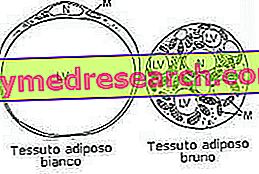Generality
Cuttlefish black is the ink used for defensive purposes by the cephalopod molluscs of the Sepiidae family (commonly known as cuttlefish).
In various parts of the world, including Italy, cuttlefish ink is a very popular food; freshly extracted, it is considered a product of great gastronomic value.
What not everyone knows is that, in reality, cuttlefish ink is not the only edible ink; to be precise, squid, squid and octopus are also used (three of the most fished species of cephalopods in the world).

Cuttlefish ink does not have a very significant nutritional meaning, even considering the extremely small portions that are used in the diet. It is in fact necessary to specify that this product has the function of flavoring and / or pigmenting the dishes, depending on how it is used; in both cases, being extremely concentrated, it is sufficient to use a few grams at a time.
What is Cuttlefish Black?
Cuttlefish black (like other cephalopod inks) is a real pigment.
NB : The Cirorder suborder and the Nautilidae family do not have this defense mechanism.
The ink is accumulated in special pockets placed between the gill slits and, to be dispersed quickly in the environment, the cuttlefish expel it into the environment through the opercula.
The color of cuttlefish black is caused by a constituent called melanin, which is the same substance responsible for tanning and pigmentation of other tissues (hairs) in humans.
Each species of cephalopod produces a slightly different color ink than the others; generally, that of the octopuses is black, of the bluish squid and of the cuttlefish tending to brown (although the differences are, to tell the truth, difficult to identify).
Property
Cuttlefish black contains a number of chemical substances, present at different concentrations depending on the species.
In addition to melanin, the liquid is also naturally rich in mucus; furthermore, small doses of tyrosinase (enzyme), dopamine and L-DOPA and free amino acids ( taurine, aspartic acid, glutamic acid, alanine and lysine ) are inferred .
Recent studies have shown that cephalopod ink can increase the activity of some components of the human immune system (natural killer cells), indirectly hindering the growth of tumor units.
Moreover, it has a discreet antibiotic effect against some pathogens ( Escherichia coli, Staphylococcus epidermidis and Pseudomonas aeruginosa ).
In conjunction with the intake of cyclophosphamide (chemotherapy drug), this ink has also been shown to protect the synthesis of red blood cells.
Cuttlefish black therefore seems to have some useful properties for the body, although, as often happens, the reference studies have only used in vitro cells and laboratory animals.
Culinary uses
In the past, cuttlefish black was used as ink.
However, the modern use of cuttlefish black is generally limited to the gastronomic field, in which it is used as a food and flavoring dye.
Also sold on large retailers in preserved, fresh form is available only from fishmongers who extract it from the bags during evisceration.
NB : The death of cuttlefish drastically reduces the concentration of mucus in the ink.
In Italian cuisine, cuttlefish black is an ingredient used in first course recipes. Added to the mixture, it effectively colors egg pasta, polenta, passatelli etc. Diluted in the sauce instead, it favors the chromatic contrast and increases the hints of fish.



